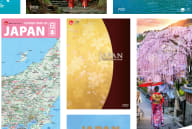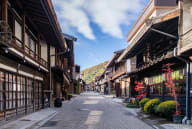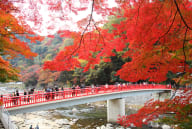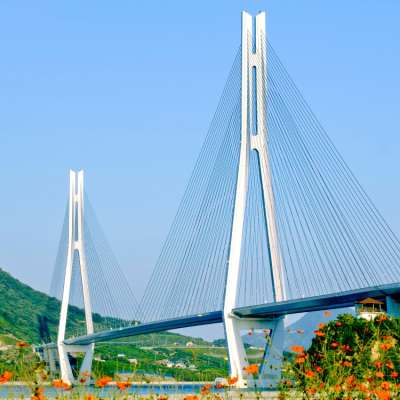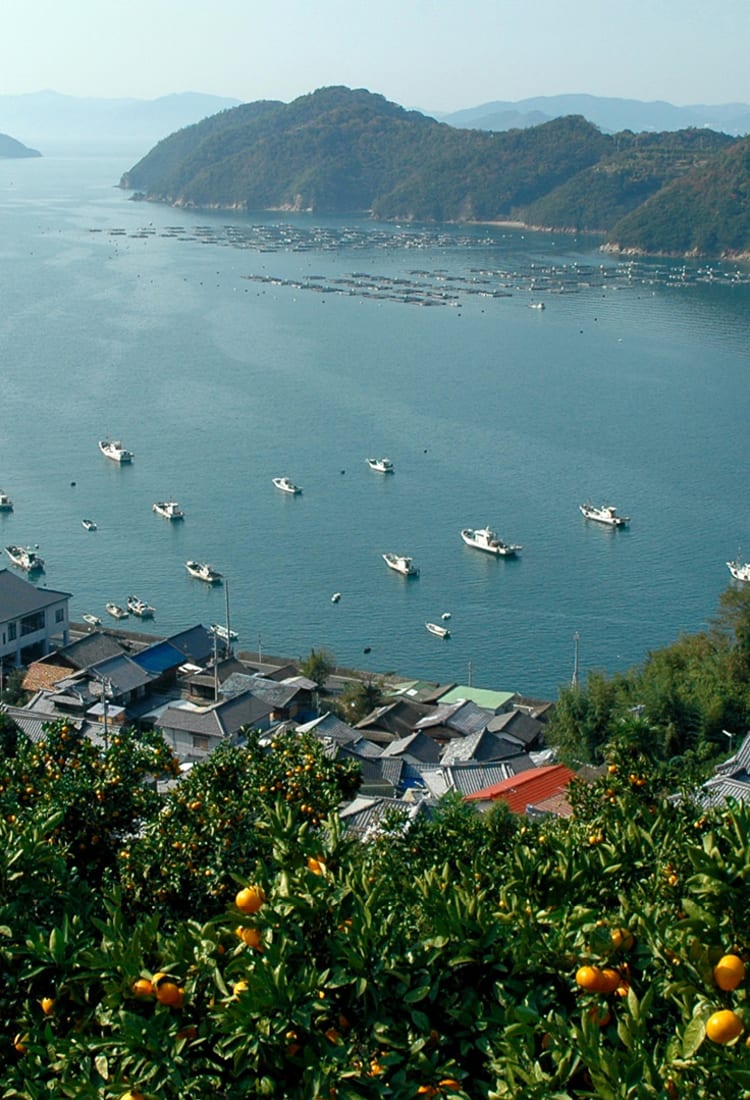
Ehime From fragrant citrus to ocean bounty
A Culinary Journey in Ehime
Ehime Prefecture, located on the northwestern coast of Shikoku, is renowned for its rich cultural heritage, scenic landscapes, and vibrant culinary traditions. Bordered by the Seto Inland Sea to the north and the Shikoku Mountains to the south, Ehime enjoys a temperate climate with warm summers and mild winters, providing the perfect environment for agriculture and aquaculture.
Ehime is celebrated for its diverse agricultural produce, seafood, and unique local specialties. The fertile lands of the prefecture yield high-quality citrus fruits, such as Iyo oranges - known for their juicy sweetness, and Ponkan oranges - celebrated for their sweet flavour and easy-to-peel skin. The coastal waters are abundant with seafood, resulting in an abundance of fresh sashimi-grade fish, and the local delicacy, Jakoten - a type of fish cake made from grated fish, which is then deep-fried to a crispy perfection. Ehime also boasts the largest amount of farmed sea bream in Japan.
Ehime is renowned for its abundance of high-quality water sources, which enhance not only the prefecture’s food and sake, but also its famous Imabari towels. The prefecture’s fresh, pure water strengthens the cotton fibres during manufacturing, resulting in towels that are exceptionally soft, luxuriously smooth, and excellently absorbent. You’ll discover Ehime’s rich nature, craftsmanship and culinary offerings while exploring the serene beauty of Dogo Onsen - one of Japan's oldest and most famous hot springs, the breathtaking view from Shimonada Station, situated along the coast, or the striking sight of Tsunakake-iwa rock with the torii gate perched on top, amongst the backdrop of the Seto Inland Sea.
Let each dish transport you to the heart of Ehime's cultural and culinary richness.
Jakoten (Fried fish cake)
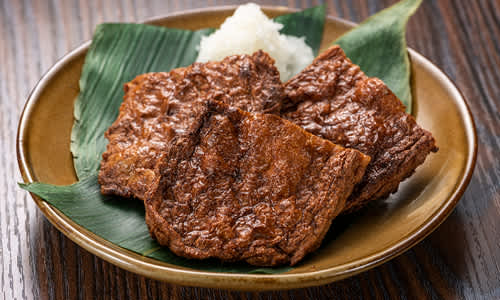
What it is (Ingredients)
Jakoten is a traditional Japanese food made from finely ground fish paste, typically using small fish. The recipe differs from shop to shop, but typically, Hotaru-jako (acropoma japonicum) is the main fish used, often accompanied by jack mackerel or Japanese goatfish, among others. Mixed with flour, seasonings, and sometimes vegetables, the paste is formed into shapes like squares and then deep-fried until golden and crispy.
History/Origin
Jakoten originated in Ehime, where it has been enjoyed for centuries. It is said that in the 1600s, a provincial lord brought fishcake craftsmen from Sendai City, leading to the development of a product made from surplus fish that could not be used for fishcake. The technique of grinding fish into a paste and frying it is believed to have originated as a way to preserve fish. Over time, Jakoten became a popular local delicacy known for its savoury flavour and crunchy texture.
Where to Eat
Jakoten is widely available at markets, local festivals, and specialty shops throughout Ehime prefecture. It is often served as an appetizer or a snack, making it perfect for a quick bite. Some establishments also put Jakoten into various meals, showcasing its versatility.
When to Eat
Jakoten is enjoyed year-round. Its crispy exterior and savoury flavour make it a favourite among locals and visitors.
Experience the crispy goodness of Ehime's Jakoten, a beloved local treat filled with the wisdom and ingenuity of the Ehime people.
Taimeshi (Sea bream bowl)

What it is (Ingredients)
Taimeshi is a delectable dish featuring succulent sea bream, served atop a bed of steamed rice. In Ehime, Taimeshi is prepared in two distinct ways. In the cities of Imabari and Matsuyama, a whole sea bream is cooked in a clay pot or regular pot, infusing the rice with its rich flavours. In Uwajima city, sea bream sashimi is placed on top of rice and enjoyed with a special sauce made from mirin, eggs, sesame seeds, and dashi stock. Both methods are designed to highlight the sea bream's deliciousness, imparting a delicate yet rich flavour to the rice beneath.
History/Origin
Taimeshi showcases Ehime’s coastal bounty from the Seto Inland Sea. Historically, fishermen would enjoy fresh catches of sea bream prepared simply over steamed rice, highlighting the prefecture's connection to maritime traditions and fresh seafood.
Where to Eat
Taimeshi can be savoured at local seafood restaurants, Izakaya (Japanese-style dining bars), and traditional Japanese eateries across Ehime prefecture. When staying at a Ryokan (Japanese inn) in Ehime, sea bream rice is often featured among the rice dishes served.
When to Eat
Taimeshi is enjoyed year-round, but it is particularly delectable before spawning in March and April, when the fish are fattier, and the meat is chewier. Locals often prepare Taimeshi during celebrations and festivals, showcasing their appreciation for the prefecture's culinary traditions and seasonal ingredients. Whether you're looking for lunch or a satisfying dinner, Taimeshi promises a memorable dining experience.
Indulge in the flavours of Ehime with Taimeshi, savouring a cuisine beloved by locals for generations.


















































